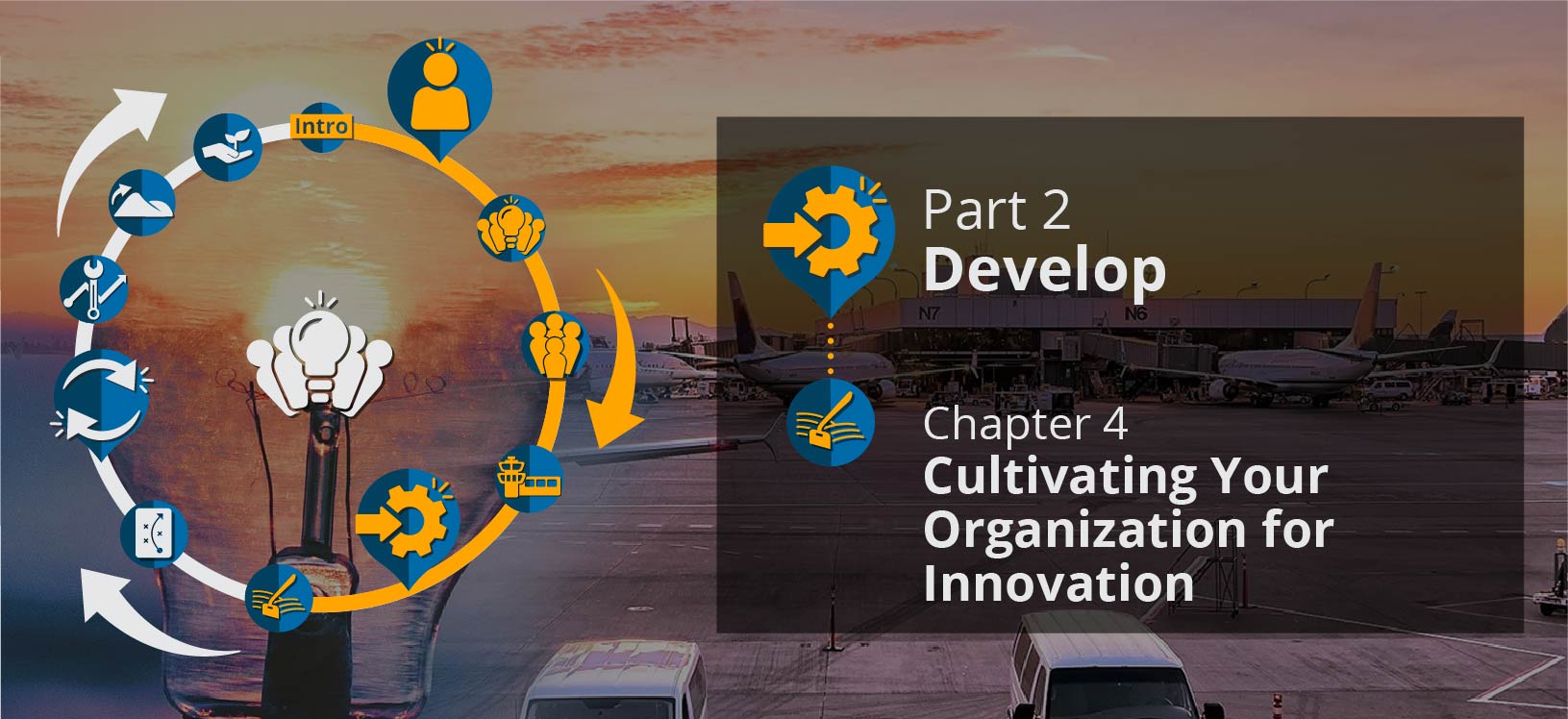

This is a Deep Dive page. Select the chapter for the Fast Track
Identifying Barriers to a Culture of Innovation
If you have done any of the steps noted in the “cultivation cycle” for any length of time, you have definitely come across challenges and barriers. Table D4.1 aligns several common barriers to the 25 plays as options you can select to start developing a culture of innovation (see Chapter 5 for more detail about these plays). These barriers and plays are further categorized under the five organizational elements that can affect culture.
Table D4.1: Common Barriers and Plays to Solve Them.
| Leader-Related Barriers | Leader-Related Plays |
| Not attuned to innovation | Play 1: Prioritize Innovation |
| Micromanagement | Play 2: Empower Staff |
| Sticking to the status quo | Play 3: Drive Change |
| Lack funding | Play 4: Seek Affordable Solutions |
| Putting the employee first | Play 5: Put the Customer First |
| Staff-Related Barriers | Staff-Related Plays |
| Fear of failure | Play 6: Develop an Innovation Mindset |
| Fear of retribution | Play 7: Create a Safe Environment |
| Office politics | Play 8: Support Open Dialogue |
| Resisting change | Play 9: Focus on Behaviors that Support Change |
| Not communicating | Play 10: Improve Communications |
| Strategy and Policy-Related Barriers | Strategy and Policy-Related Plays |
| Lack a clear strategic plan | Play 11: Develop a Unifying Strategic Plan |
| Values do not support innovation | Play 12: Align with Organizational Values that Support Innovation |
| Focused on the short term | Play 13: Focus on the Long Term |
| Lack of unique & fresh ideas | Play 14: Prioritize an Exceptional, Comprehensive Team |
| Rigid HR hiring procedures
HR policies reward outcomes, not process |
Play 15: Drive Innovation into HR Policies and Practices |
| Organizational Structure-Related Barriers | Organizational Structure-Related Plays |
| Bureaucracy | Play 16: Aligning Organizational Structure to Support Innovation |
| Isolating innovation | Play 17: Effectively Roll Out Structural Changes |
| Inconsistent innovation acceptance | Play 18: Develop Strategies by Business Function to Overcome Resistance to Change |
| Not collaborating (low risk-tolerance) | Play 19: Create a Collaborative Work Environment |
| No budget for innovation | Play 20: Emphasizing Organizational Budgets to Support Innovation |
| Process and Procedure-Related Barriers | Process and Procedure-Related Plays |
| Lack of motivating goals | Play 21: Discover What Motivates Employees |
| Lack of time | Play 22: Structure Time for Speculation |
| Lack of training | Play 23: Provide Innovation-Related Learning Experiences |
| Working in silos | Play 24: Collaborate with Internal and External Partners |
| Lack of shared information | Play 25: Focus on Learning by Transferring Knowledge |
Do any of these strike a chord? If so, you now have a jump start into which plays in Chapter 5 you should consider first. If not, you can still use this handy matrix as a quick reference to align your plays in the future.



